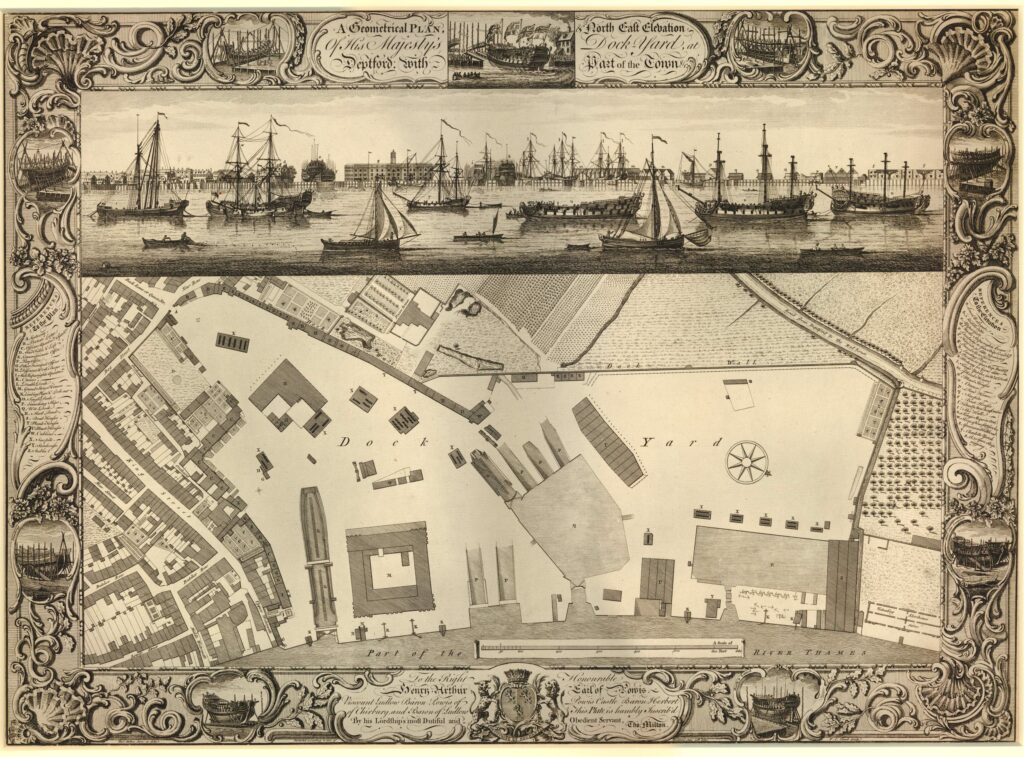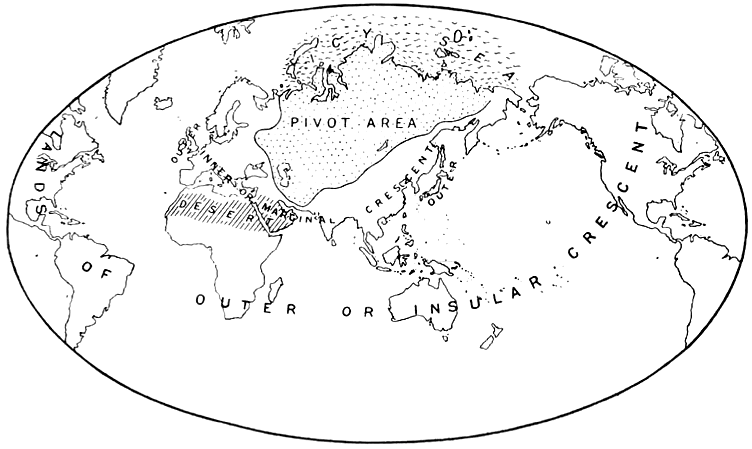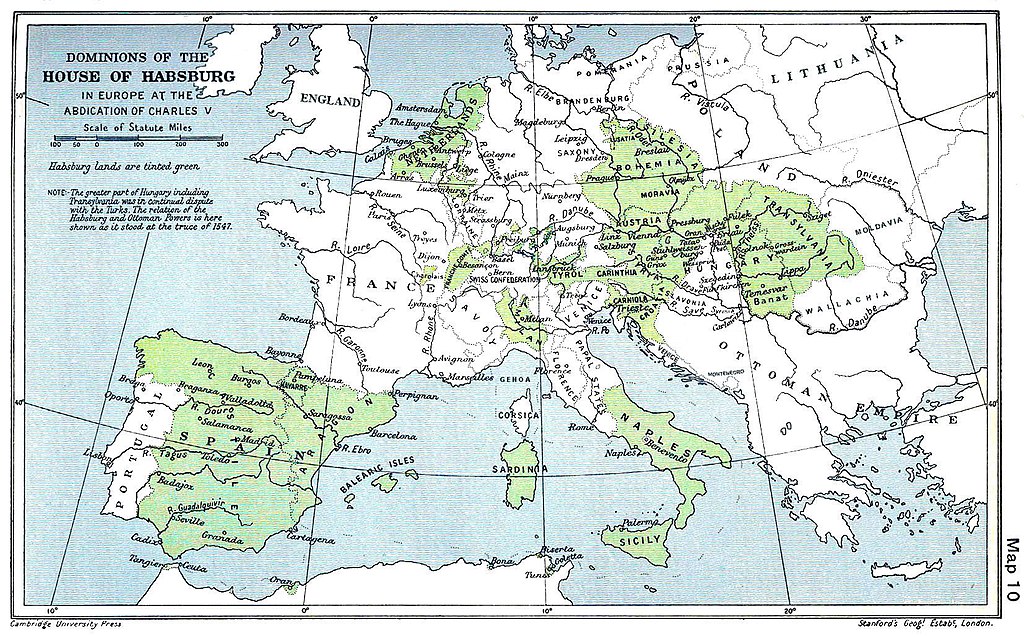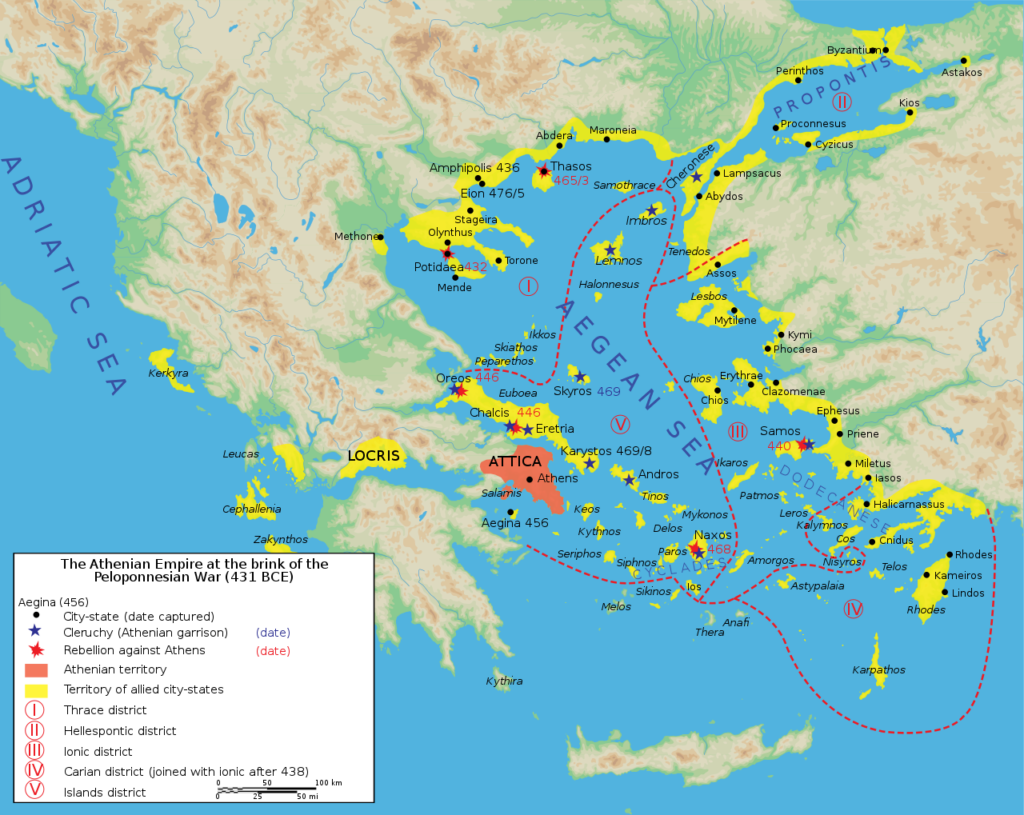Each state, or to be more precise, each leader, has a mental map of the surrounding world. Such maps are drawn by history, culture, religion, and of course geographic knowledge, and they inform the strategic posture of the state: how one sees the world shapes how one acts in it.1 Inevitably there will be divergences between this mental map and the actual geopolitical reality, divergences vividly conveyed by looking at ancient maps drawn with a limited knowledge of geography but with exquisite care seeking to guide the mariner, the general, and the political leader alike.
This divergence between how one thinks of the map and the actual reality of it is not a hindrance to action but only a check on it. It is possible that a power expands in vain into a region, wrongly considering it vital to its interests and security, simply because of a mistaken mental map. But what turns out to be a wrong geostrategic vision is still worth studying because it is part of the intellectual structure that underlies the grand strategy of a state.
In what follows, I sketch some reasons that different states think of the space around them differently, focusing on the basic distinction between sea and land powers. This is the simplest distinction possible, presenting two extremes on a spectrum. I conclude with some thoughts on the sources of a state’s widening vision underwriting an expansion of its power outside its home territory. In brief, this commentary will address, first, how states think of their strategic space and, second, why they seek to control it.
Conceptions of Strategic Space
The greatest difference in how great powers think of the map around them is between land and sea powers. The geopolitical nature of the state shapes both where it thinks of directing attention and resources and how it exercises power. Nicholas Spykman succinctly described this difference in his writings.2 In brief, he observed that “a land power thinks in terms of continuous surfaces surrounding a central point of control, while a sea power thinks in terms of points and connecting lines dominating an immense territory.”3
Land powers, according to Spykman, think of contiguous space, starting from their frontiers and moving outward. Given their continental nature, land powers have to pursue their territorial expansion in concentric circles, leaving no empty or independent lands in between. Basic logistical necessity drives such a conception of space: to permit an uncontrolled, and thus potentially hostile, territory to remain in the midst of one’s own real estate risks undermining the whole imperial architecture.

How land powers seek to control space is also peculiar. They tend to seek domination through a strong proxy or directly. In either case, military expansion precedes political control and influence. The purpose is after all domination rather than mere access because the former is exclusionary while the latter allows competition. Russia, for instance, seeks to exercise dominion over Ukraine, a conditio sine qua non of any further imperial aspirations toward Europe or the Black Sea (and further out in the Mediterranean basin).
On the other side of the spectrum of ideal states, sea powers think of points and lines, ports and routes. They do not need to exercise direct rule over large contiguous territories, limiting themselves instead to access in strategically placed ports that allow control over the sea lanes between them and connecting with the desired markets. Moreover, a distant port may be interchangeable with another one that provides access to the same markets, giving the sea power a certain strategic flexibility that land powers rarely enjoy.

Sea powers also pursue their expansion—how they control space—differently. Because they seek access rather than direct domination, they tend to privilege political and economic influence over military expansion. Diplomacy is preferred to military force. In fact, the actual use of military force to achieve military preponderance in one location is a reluctant outcome of the inability to gain access to a market through negotiations or a friendly partner. The only direct control that sea powers have consistently sought in history was over territorial waters, which are a very limited maritime space, by forcing foreign ships to pay taxes or to lower their flags in a sign of submission.4
A further difference between land and sea powers concerns where they draw the line in securing their interests. Sea powers always think of the littoral on the other side of the sea as vital to their security and interests. Their own coast is part of their homeland and the primary space to protect, but its safety ultimately does not depend on thick walls on the beach or even only on naval preponderance in their own coastal waters or on distant seas. The immense maritime space, in fact, does not lend itself to complete control by one power the same way that land does. Hence, security of one’s own shoreline is best guaranteed by a friendly equilibrium on the other side of the waters, with hostile powers far away from the seas or preoccupied with their continental neighbors.

The leap from a land power with a navy to a sea power with maritime control lies precisely here, in how the polity considers the opposite littoral. The best example of such a leap was in the course of the Punic Wars between Rome and Carthage. The two Mediterranean great powers of the time fought to control their opposite shorelines: Carthage in Sicily, and then Rome in North Africa. Rome’s victory against Carthage delivered the North African shore into its hands, firmly placing Rome in control over the Mediterranean and ensuring greater safety for the Italian coastline. Sea control, perhaps paradoxically, is best achieved through littoral control rather than mere naval supremacy.
Similarly, the British isles were safer when the opposite shores, in Europe and in particular Belgium, were not in hostile hands. The neutrality of Belgium, a small country among continental great powers, was thus crucial for British security, and the purpose of Britain’s strategy was to maintain a limited continental commitment in order to prevent an inimical power from settling on Europe’s littoral. The United States continued such a strategy on a much larger, global scale, defining its security as grounded in the friendly stability of the rimlands, the littoral of Eurasia, in counterpoise against an enemy springing from the continental “heartland.5 As Bernard Brodie observed toward the end of World War II, the presence of “strong allies who were contiguous with our enemies has been an incalculable benefit to us. It has enabled us to hit our enemies hard, and to do so on their own thresholds rather than on ours.”6 The United States’ security, like that of Rome and other sea powers in history, was not on or immediately off its shores but on the littoral on the other side of the ocean.

Finally, a state’s mental map is shaped by power, or at least the self-perception of power. A polity endowed with geopolitical heft will naturally cast a wider look at the world, whereas a state with scarce resources will focus on its immediate neighborhood and borders. One definition of a great power is a state with interests, and the ability to influence the geopolitical dynamics, beyond its borders. A symptom of this is how a state conceives of its frontiers. For instance, the frontiers of a powerful empire tend to be borderlands; they are zonal rather than linear.7 The defense of such borderlands fluctuates, with the empire projecting forces beyond the lands it fully administers when it has (or thinks it has) power and retreating behind a stationary line when it does not. A sense of weakness leads the great power to a rigid defensive posture, seeking to fix the frontier.8 The growth of the United States, for example, pushed the continental frontier across the great plains to the Pacific. The Ottoman empire similarly treated the Danubian basin as a wide frontier where it could push and pull during its centuries of imperial vitality until the late seventeenth century.
Another way to think about frontiers and power is that a confident great power will surround itself with buffers, semi-independent political entities that separate it from the main rivals. Armenia played such a role between the Roman empire and Parthia. The Habsburg empire in Central Europe sought such buffers, building space between itself and Prussia, France, and Russia.9 Geopolitical pluralism on the frontier is the goal—but also a symptom—of a powerful state. When such pluralism dwindles because one power fears losing control due to its diminished stature, or an antagonist power seeks to expand and is unchecked, the frontier becomes more rigid and the rivals abut each other. This benefits neither regional stability, given the risk of a large-scale war, nor the weakening great power, which is under the menace of a direct clash with an assertive and rising enemy.

Implications
While these conceptions of strategic space mold the diplomacy, the military force structure, and the economic configuration of a state, on their own they do not suffice to force the state to act beyond its own territory. Three observations may be worthwhile on this issue. First, great powers broaden their geostrategic vision because of a conscious decision, not in a moment of absentmindedness. They decide to act and are not forced to do so by some abstract structure or impersonal force. They may of course fail in their pursuit, but their failure is not due to their acting randomly. Athens went to the sea because of decisions taken first by Themistocles and then by Pericles, who coaxed the Athenians to avoid land battles that would have given an advantage to their enemy, Sparta. England also directed its attention to the sea in the early 1500s because it recognized its weakness on land, making it incapable of conquering France. Russia’s expansion toward its south and west has been, since Peter the Great, a conscious and willed strategy to seek imperial greatness and access to the seas, neither of which is achievable in the Asiatic theater.10

Second, economic interests do not explain every imperial outlook. Some polities past and present seek to control a strategic space outside their national territory not in search of markets or resources, but simply out of a sense of power, perceived national character, or imperial glory. In fact, they may seek to expand on sea or on land, even though doing so is not economically beneficial. Russia’s current war against Ukraine is a case in point: the economic costs paid by Moscow have not and are not a deterrent to its continued attempt to expand westward. But Russia is not a solitary example in history. Many of Rome’s imperial adventures, starting from Julius Caesar’s war in Gaul and his expeditions to Britain, were exercises in prestige rather than efforts to improve the economic welfare of the empire. Roman generals and emperors sought glory more than resources and trade. In fact, Rome often denied commercial relations (with a particular emphasis on limiting the transfer of military technology) to neighboring groups when it felt strong, and agreed to trade with them only when it could not fight. Trade was a symptom of weakness, not strength.
Third, some states in history expanded beyond their homeland and even their nearby region not because they were competing with an existing rival but because of an absence (or a potential absence) of an ordering power. They started to consider distant areas as their own strategic space demanding their presence because nobody else was guaranteeing stability. For example, Venice pushed outward from the Adriatic into the Eastern Mediterranean in large measure because Byzantium, its protector and ally, had become a feeble power unable to provide security to the sea lanes and guarantee access to its ports. Venice, that is, became a great Mediterranean power less because of a direct threat by a rival and more out of necessity to reluctantly provide what previously was given to it.
Each power in history has its own peculiar outlook on the world, shaped by unique historical experiences, specific geographic locations, and national cultural proclivities. But it is possible to separate these outlooks into the distinct categories of sea and land powers. The former thinks of the world beyond its national borders in ways that are very distinctive from those adopted by the latter. Both the objectives sought and the ways in which these objectives are pursued will be conceived differently depending on whether a power sees itself as a predominantly continental or maritime entity. The great historical and policy question is whether—and if so, under what circumstances—it is possible for a state to alter the strategic outlook from that of a land power to that of a maritime power. One way of gauging such change is by looking at where the power in question draws the line of its interests—for instance, at its frontiers and coastline (a land power) or on the opposite littoral (a sea power). Another test is whether the state tends to expand by gradually conquering contiguous territories, as land powers do, or by hopping from place to place with an eye only to the routes linking them, as sea powers do.
Jakub Grygiel is Professor of Politics at the Catholic University of America in Washington D.C. He is the author of Return of the Barbarians (2018) and Great Powers and Geopolitical Change (2006).
IMAGE CREDITS
Banner illustration by Nate Christenson ©The National Bureau of Asian Research.
Map of the fortified town of Neuf Brisach. | Wikipedia
Dock at His Majesty’s shipyard, at Deptford, with part of the town. | The British Museum: CC BY-NC-SA 4.0
Hannibal crossing the Alps. | Wikipedia: José Luiz Bernardes Ribeiro/CC BY-SA 4.0
A map from Halford Mackinder’s The Geographical Pivot of History. |Wikipedia: Public Domain
A map of the dominion of the Habsburgs following the Battle of Mühlberg (1547). | Wikipedia: Public Domain
Map of the Delian League (“Athenian Empire”) in 431 BCE, just prior to the Peloponnesian War. | Wikipedia: CC BY-SA 2.5
ENDNOTES
- Harold Hance Sprout and Margaret T. Sprout, The Ecological Perspective on Human Affairs (Princeton: Princeton University Press, 1965).
- Nicholas J. Spykman, “Geography and Foreign Policy, II,” American Political Science Review 32, no. 2 (1938): 224.
- Spykman, “Geography and Foreign Policy, II” 224.
- Beatrice Heuser, “Regina Maris and the Command of the Sea: The Sixteenth Century Origins of Modern Maritime Strategy,” Journal of Strategic Studies 40, nos. 1–2 (2017): 225–62.
- ”Nicholas John Spykman, The Geography of the Peace (New York: Harcourt, Brace and Co., 1944).
- Bernard Brodie, A Guide to Naval Strategy (Princeton: Princeton University Press, 1944), 4.
- Owen Lattimore, Studies in Frontier History: Collected Papers 1928–1958 (London: Oxford University Press, 1962).
- Charles S. Maier, Once Within Borders: Territories of Power, Wealth, and Belonging since 1500 (Cambridge: Harvard University Press, 2016), 20.
- A. Wess Mitchell, The Grand Strategy of the Habsburg Empire (Princeton: Princeton University Press, 2018).
- John P. LeDonne, The Russian Empire and the World, 1700–1917 (New York: Oxford University Press, 1997).

